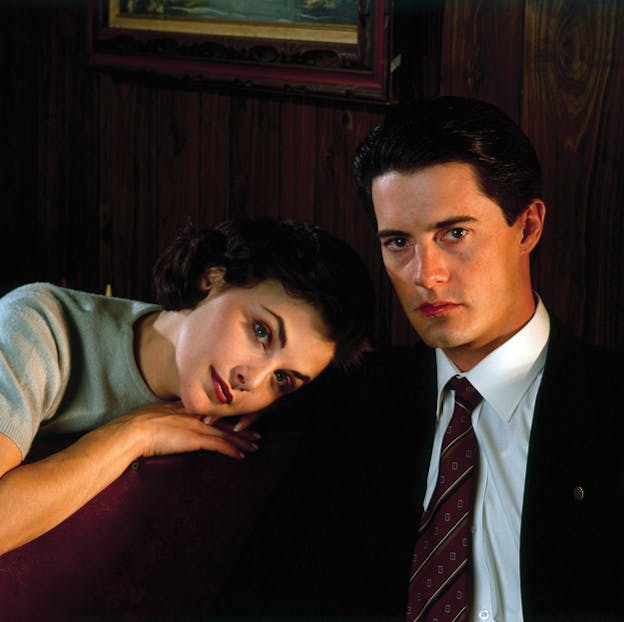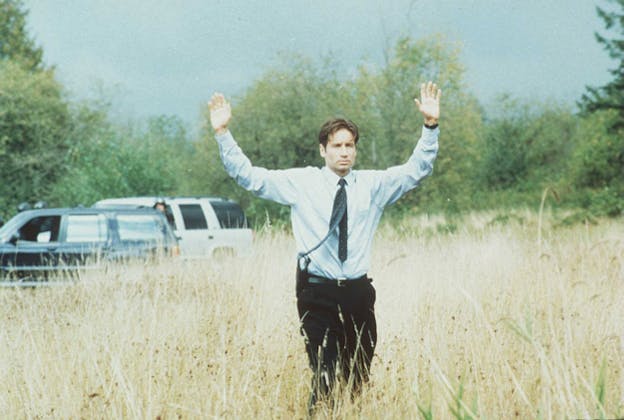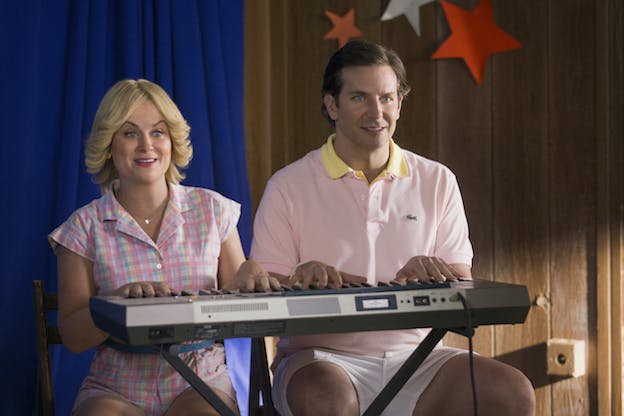Television is a cultural form built on forgetting. In the medium’s earliest years, programs were broadcast live, disappearing as soon as they were transmitted over the airwaves. Through the early ’70s, the networks regularly taped over their recordings of game shows, soap operas, and late night, freeing up storage space and wiping away the only traces of what had appeared onscreen. Who would want to rewatch an episode of “General Hospital” or “The Tonight Show,” after all? Even the less obviously ephemeral programs often weren’t worth the videotapes they were kept on. Television was literally consigned to the dustbin.
Those days are long over. In fact, television right now is in the grip of reboot mania, infecting everything from cult classics to creaky family fare. David Duchovny and Gillian Anderson have begun production on six new episodes of an “X-Files” revival, to the fervent joy of the show’s legions of fans. Twenty-five years after the strange, singular “Twin Peaks” ended its short run, David Lynch has agreed to come out of semiretirement to direct a new season for Showtime. And Netflix, capitalizing on broader millennial nostalgia for the schmaltzy television of our youth, is bringing back the 1990s sitcom “Full House,” perhaps best understood today as the venue that launched the careers of pint-size mega moguls Mary-Kate and Ashley Olsen.
While those projects are still in production, some less eagerly awaited options are already slated to air this fall. ABC is reincarnating “The Muppet Show,” this time in a more contemporary mockumentary style. Meanwhile, NBC is bringing back “Heroes” as a 13-episode miniseries—“Heroes Reborn”—barely five years after the bloated sci-fi drama ran out of steam, and it is also hoping that people will tune in to a sequel to Craig T. Nelson’s long-forgotten ’90s sitcom “Coach.” And don’t forget: Bob Odenkirk and David Cross are filming a Netflix follow-up to HBO’s “Mr. Show,” a late ’90s precursor to much of today’s darkly absurdist sketch comedy, that is set to appear late this year or early next. Disney’s tween–targeted “Boy Meets World” sequel, “Girl Meets World,” is currently airing its second successful season.

This isn’t the “Mad Men” or “Downton Abbey” sort of nostalgia that was dominant a few years ago, when Don Draper was inspiring Banana Republic lines, boosting sales at mid-century modern furniture temple Room & Board, and spurring TV knock-offs (R.I.P. “The Playboy Club” and “Pan Am”) that invested in aesthetics, but were light on plot or character. We’re not indulging in any particular social era now, just television itself—the pop culture detritus of the past. It’s a snake eating its tail.
Weren’t we supposed to be in some kind of innovative golden age of television? It’s easy to look at all these revivals, reunions, and remakes as a sign of the industry’s creative exhaustion: After emerging as the last refuge for the kind of serious adult entertainment that Hollywood no longer makes, television succumbs to the same sort of franchise frenzy that consumes the studios. Instead of supporting original storytelling and risk, networks capitalize on our collective nostalgia, churning out more of what we have already proven we like.
We share announcements about the revivals of our childhood favorites; we eagerly click on news of the latest “Twin Peaks” update. When Gillian Anderson recently tweeted a photo from the “X-Files” set, it was retweeted over 30,000 times. It’s not just clicks: Nick at Nite’s “Full House” reruns often outperform (among certain demographics) original network shows airing in the same time slot. The Internet—or some corners of it—runs on ’90s nostalgia: BuzzFeed quizzes, Jimmy Fallon viral vids, the Facebook feeds of old classmates you haven’t spoken to in years. If brands use it to sell us things, and websites mine it for content, why shouldn’t production companies do the same?
We have been here before, of course—and looking back at previous moments when TV nostalgia seemed to reign supreme may provide a little insight into our current fixations. In the late ’70s, when videotape became cheap and so did VCRs, old television became something to cherish rather than discard. In Esquire, TV critic Tom Shales published a 1986 feature titled “The Re Decade,” arguing that “the Eighties have no texture, no style, no tone of their own. ... They have the texture and style and tone of all other decades, at least those on film or tape.” After all, he wrote, “Never before have people, or a people, had nearly unlimited access to what has gone before, been able to call it up and play it back and relive it again and again.” What’s old was new again. “Why is television so fixated on the past?” The New York Times asked in 1991, as the networks aired retrospectives on “M*A*S*H,” “The Ed Sullivan Show,” and “All in the Family.”

With the proliferation of VCRs and cable, syndication and endless reruns became the economic foundation of the TV industry. There were hundreds of new cable channels with many, many hours to fill, and the cheapest way to fill them was with programs from years past. And so classic shows no longer just existed in our collective memories—they were back on our TV sets. You could watch “I Love Lucy” at strange hours. You could watch old episodes of “The Brady Bunch,” and then watch them reunite at “A Very Brady Christmas.” You could buy “TV nostalgia books,” expensive trade paperbacks devoted to sitcoms like “Leave It to Beaver” and “The Honeymooners,” filled with photos, trivia, and quizzes.
The industry now is going through similar changes, with Netflix replacing syndication and the binge-watch replacing reruns. There aren’t a greater number of hours to fill, parceled out in discrete time slots—there are infinite hours, whenever the viewer wants them. But despite this sea change, production companies still make their money from selling a show’s future rights: They’re just selling it to Netflix or Hulu in addition to cable networks and local affiliates. The new TV economics offer a clear business rationale for all the remakes and reunions: A new season means that people will want to rewatch all the old ones, making that back catalogue suddenly more valuable. Before Showtime airs its brand new “Twin Peaks” in 2016, it can rerun the old episodes over and over. As Forbes noted recently, when the “X-Files” revival was announced, “Fox can use that leverage to strike yet another highly valuable streaming deal with one of the big three (Netflix, Amazon and Hulu).” For a studio, bringing a show back from the dead means making much, much more money off of it. (In fairness, there are over four times as many scripted series making it to air than there were just a decade ago; if a bunch of those are recycled, that still leaves more original television than there ever used to be.)

Inside this business reasoning is a deeper cultural logic. We want new versions of our old favorites because they’re no longer old to us; they’re streaming, right now. The arrival of a beloved show to a service has become a major cultural event. When “Friends” became available on Netflix this New Year’s Day, it had been preceded by monthlong coverage on New York magazine’s Vulture, and followed by think pieces across the Internet arguing whether the show is a classic (it might be), and if it’s homophobic (it is). Twenty-year-old shows became grist for hot takes. Television’s ephemeral past is Netflix’s eternal present.
In July, Netflix will release all eight episodes of a much-anticipated prequel to Wet Hot American Summer, the ’80s-set cult comedy that was ignored in its 2001 cinematic release and revered in the 14 years since. It’s a minor entry in television’s revivalist turn, overshadowed by the more buzzy return of “Twin Peaks,” “The X-Files,” and “Full House,” but in other ways it represents our redux culture in its purest form. A goofy homage to long-forgotten camp movies, the original film obsessively recreated early ’80s fashions and clichés, drawing on the creators’ deep nostalgia for their summer-camp memories and afternoons spent watching Meatballs on television.
Yet for the millions of younger fans who made it a beloved classic and have streamed it in the months since it was added to Netflix, it evokes a third-hand nostalgia for movies they never watched and hairstyles they never lived through. And if the original, with its thirtysomething comedians playing teenagers, played fast and loose with time, “Wet Hot American Summer: First Day of Camp” flattens time’s passage entirely. The middle-aged actors will be playing characters two months younger than those they played initially. It’s been 14 years, but Amy Poehler won’t have aged a day. On Netflix, at least, there’s only now.
